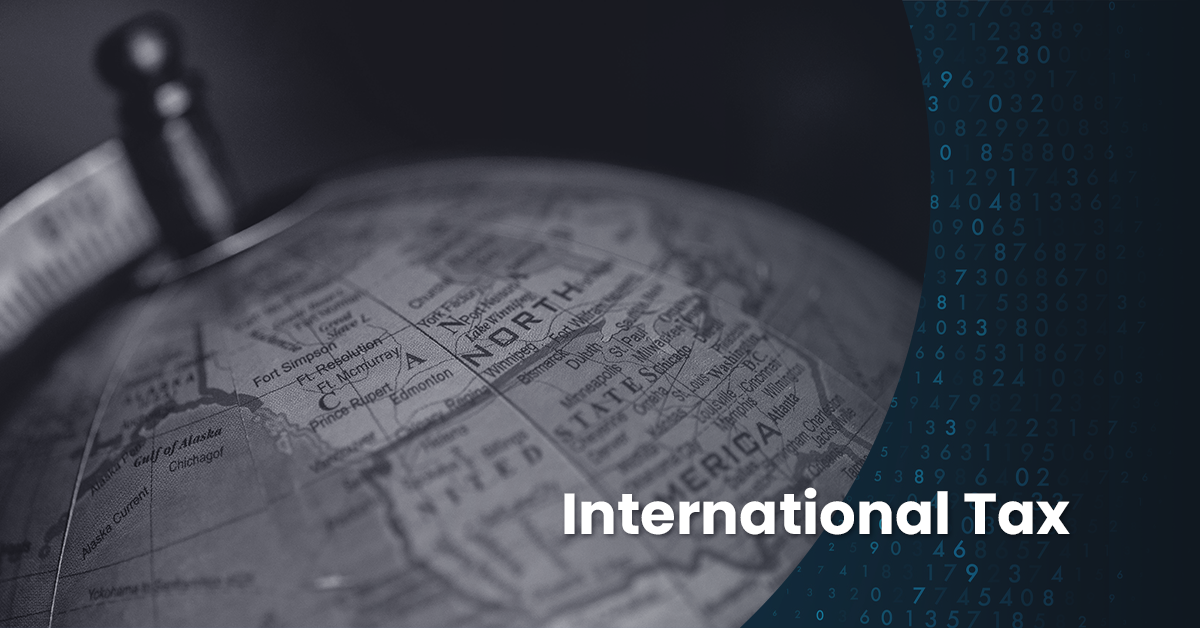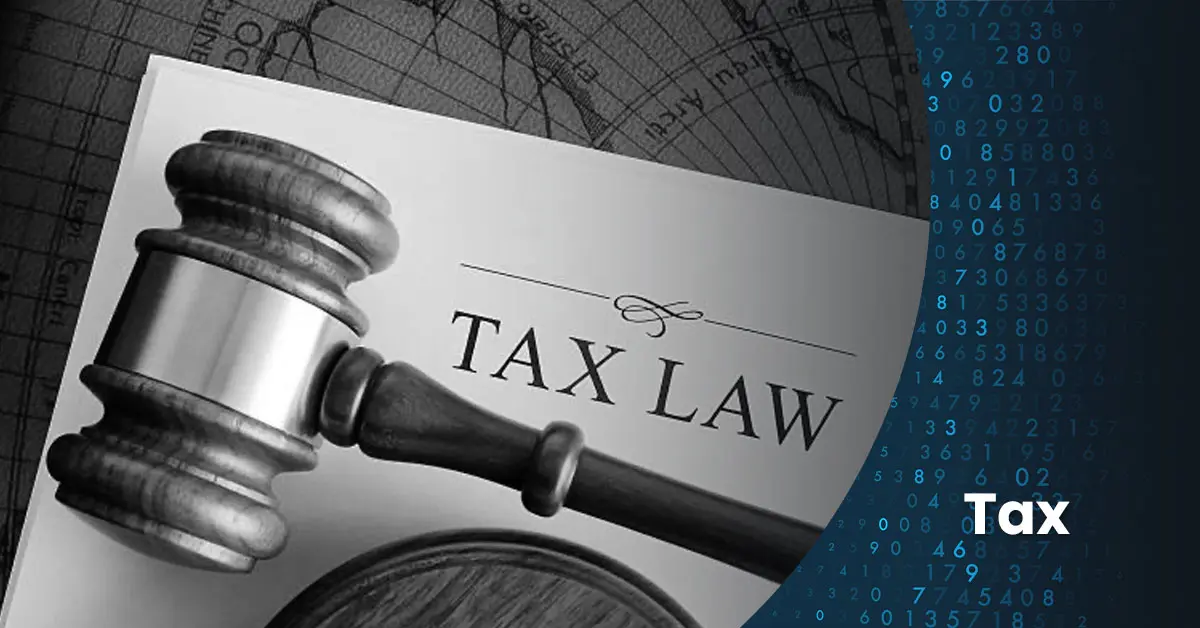The Consolidated Appropriations Act, 2023 (Public Law No. 117-328) that was signed into law on December 29, 2022, by President Joe Biden includes the SECURE 2.0 Act of 2022, which introduces over 90 changes to the federal rules governing workplace retirement plans.
This landmark legislation builds on the original SECURE Act that was enacted on December 19, 2019, and aims to expand coverage and increase retirement savings while simplifying and clarifying retirement plan rules.
Every employer, whether for-profit or tax-exempt, that currently maintains a qualified retirement plan or is evaluating a future plan should consider implementing these new rules since the changes are generally beneficial for employees.
Unless the Internal Revenue Service (IRS) announces otherwise, employers that operate in accordance with the mandatory or optional changes in the law as of the provisions’ applicable effective date have until the end of the plan year beginning in 2025 to adopt the written amendment. Government employers have until the end of their 2027 plan year to amend the plan document.
To help prioritize the evaluation of the changes, the following summary of the SECURE 2.0 provisions is organized by the year in which the change is required or may be incorporated into plan operations, without regard to the plan type. Future articles will discuss various aspects of SECURE 2.0, including strategic opportunities and implementation challenges for employers.
Changes with immediate effective dates
Insight: Employers need to consider immediately updating employee notices and plan procedures for these important changes in the law.
Later required minimum distributions (RMDs). SECURE 2.0 increases the age at which retirement plan participants must begin receiving RMDs from 72 to 73, starting January 1, 2023. The original SECURE Act increased the starting age for RMDs from 70½ to 72.
- Aggregation of distributions on tax-preferred retirement accounts that hold annuities. Effective December 29, 2022, RMDs can be determined by aggregating distributions from both the annuity and non-annuity investments.
- Reduced excise tax for a failure to take RMDs. Effective for taxable years beginning after December 29, 2022, the excise tax rate is reduced from 50% to 25% of the missed RMD for workplace retirement plans and IRAs. Further, if an IRA makes a corrective distribution generally within two years, the excise tax is reduced to 10% for the IRA (but not for workplace retirement plans).
- Encourages life annuities. SECURE 2.0 eliminates certain actuarial tests in the RMD regulations that operated as barriers to the availability of life annuities in qualified plans and IRAs. Effective for contracts purchased or received in an exchange on or after December 29, 2022, SECURE 2.0 repeals the 25% limit and allows up to $200,000 (indexed) to be used from an account balance to purchase a qualifying longevity annuity contract (QLAC). It also clarifies that “free look” periods are permitted up to 90 days for contracts purchased or received in an exchange on or after July 14, 2014.
- Reduces disclosures for unenrolled employees. Effective for plan years beginning after December 31, 2022, employers are no longer required to provide most notices under ERISA or IRS rules to employees who do not participate in the employer’s retirement plan. However, employers must provide an annual reminder of the employee’s eligibility and deadline, if applicable, to participate in the plan. Employers must also provide such individuals with any plan documents they request.
- Allows incentives for 401(k) and 403(b) elections. Effective for plan years beginning after December 29, 2022, employers may provide de minimis financial benefits, such as low-value gift cards, as an incentive for employees to elect to contribute to a 401(k) or 403(b) plan without violating IRS’s “contingent benefit rule.”
Insight: The legislation does not define what dollar amount would be considered de minimis, so IRS guidance is needed. Based on long-standing IRS guidance in other contexts (for example, “de minimis” fringe benefits) the dollar value threshold is very low, which may not be sufficient to motivate anyone to enroll in the plan. The incentives cannot be paid from plan assets.
- Employer contributions may be designated as Roth contributions. Effective December 29, 2022, employers may allow plan participants to designate employer matching and nonelective contributions as after-tax Roth contributions. Such contributions would be included in the participant’s taxable wage income for the year made. Employer contributions designated as Roth contributions must be immediately 100% vested.
- Permanent relief for federally declared disasters. Effective for federally declared disasters occurring on or after January 26, 2021 (i.e., this provision is effective retroactively), plans or IRAs may allow affected participants additional access to retirement funds. Penalty-free distributions up to $22,000 per participant, per disaster may be taken into taxable income over three years and participants can recontribute those amounts to a tax-preferred retirement account within three years. Plans can also increase the affected participant’s loan limit to $100,000 (instead of the regular $50,000 loan limit) or the participant’s vested account balance. Also, if the affected participant has a non-disaster plan loan outstanding the repayment period can be extended by one year.
Insight: This is permanent relief that eliminates the need for specific disaster relief to be issued by the IRS.
- Reliance on employee’s certification for hardship distributions. For plan years beginning after December 29, 2022, plan sponsors can rely on employees’ self-certification that the employee has experienced a deemed hardship for purposes of taking a hardship withdrawal from a 401(k) or 403(b) plan and that the distribution is not in excess of the amount required to satisfy the financial need. Future regulations might restrict reliance if the sponsor has information that contradicts the employee’s certification.
- 10% early withdrawal penalty waived for terminally ill. Effective for distributions made after December 29, 2022, the 10% penalty on early withdrawals before age 59 1/2 is waived for distributions to terminally ill individuals whose physician certifies that they have a condition that is expected to result in death within 84 months.
- Repayment of qualified birth or adoption distributions. Effective for distributions made after December 29, 2022 (and retroactively to the three-year period beginning on the day after the date on which such distribution was received), repayment of qualified birth or adoption distributions are limited to three years. Previously, such distributions could be recontributed at any time, but due to the IRS’s three-year statute of limitations to amend an income tax return, taxpayers might not receive a refund of the taxes that were paid in the year of withdrawal. This change aligns the repayment period with the eligibly for refund.
- Cash balance plan interest crediting rates. Effective for plan years beginning after December 29, 2022, cash balance plans with variable interest crediting rates may use a projected “reasonable” interest crediting rate that does not exceed 6%. This means that those plans can use graded pay credits that increase for older, longer service workers without risking failing the anti-backloading rules that otherwise may create problems for cash balance plans that use market-based interest crediting rates.
- Elimination of variable rate premium indexing. Effective on December 29, 2022, SECURE 2.0 replaces the “applicable dollar amount” language for determining the premium funding target for purposes of unfunded vested benefits and replaces it with a flat $52 for each $1,000 of unfunded vested benefits.
- Correction of mortality tables. Effective December 29, 2022, pension plans are not required to assume certain mortality improvements. The IRS must amend the applicable regulations within 18 months.
- 403(b) investments in collective investment trusts (CITs). Effective December 29, 2022, CITs are permissible investments for 403(b) plans. Previously, under IRS rules, 403(b) plans could invest only in mutual funds or annuity contracts, which generally have higher fees than CITs.
Insight: Although this changes the tax rules, it appears that federal securities laws will need to be updated before 403(b) plans can invest in CITs.
- Multiple employer 403(b) plans. Effective for plan years beginning after December 31, 2022, 403(b) plans can participate in multiple employer plans (MEPs).
- Expanded Employee Plans Compliance Resolution System (EPCRS). Effective December 29, 2022, SECURE 2.0 enhances the IRS’s self-correction program to: (1) allow more types of errors to be self-corrected without an IRS filing, (2) apply to inadvertent IRA errors, and (3) exempt certain RMD failures from the otherwise applicable excise tax. For example, operational errors that can be self-corrected without an IRS filing now include significant errors and plan loan errors, provided the error is corrected within a reasonable time after it is discovered (and the IRS has not identified the error). Employers are no longer required to attempt to recoup certain overpayments made to participants. The IRS was directed to update the EPCRS revenue procedure accordingly within two years and the U.S. Department of Labor (DOL) is required to coordinate its Voluntary Fiduciary Compliance Program (VFCP) accordingly.
- Auditor’s report for “group of plans”. Effective December 29, 2022, defined contribution plans filing a single Form 5500 as a “group of plans” must submit an auditor’s opinion if any plan in the group, individually, has 100 participants or more at the beginning of the plan year. The auditor’s report will relate only to each individual plan that would otherwise be subject to an independent accountant’s report. Thus, the DOL and the IRS will continue to receive the same number of audit reports (and content) about plans with 100 or more participants that would be filed if the “group of plans” was not filed as a single Form 5500.
- $500 small plan tax credit for military spouses. Effective for taxable years beginning after December 29, 2022, employers with 100 or fewer employees earning at least $5,000 in annual compensation can receive a general tax credit of up to $500 for three years, if they make military spouses (1) eligible for defined contribution plan participation within two months of hire; (2) upon plan eligibility, they are eligible for any match or non-elective contribution that they would have been otherwise eligible for at two years of service; and (3) 100% vested in employer contributions. The credit is $200 per participating non-highly compensated military spouse, plus 100% of employer contributions made to the military spouse, up to $300. No credit is available for highly compensated employees. The credit is available for the year the military spouse is hired and the two succeeding taxable years. Employers may rely on the employee’s certification that they are an eligible military spouse.
- Small employer plan start-up credit. Effective for taxable years beginning after December 31, 2022, the start-up credit for adopting a workplace retirement plan increases from 50% to 100% of administrative costs for small employers with up to 50 employees. The credit remains 50% for employers with 51-100 employees. Employers with a defined contribution plan may also receive an additional credit based on the number of employer contributions of up to $1,000 per employee. This additional credit phases out over five years for employers with 51-100 employees. The start-up credits are available for three years to employers that join an existing MEP, regardless of how long the plan has been in existence. The MEP rule is retroactively effective for taxable years beginning after December 31, 2019.
- SIMPLE and Simplified Employee Pension (SEP) Roth IRAs. Effective for taxable years beginning after December 31, 2022, SIMPLE IRAs can accept Roth (i.e., after-tax) contributions. In addition, employers can offer employees the ability to treat employee and employer SEP contributions as Roth contributions (in whole or in part).
- SEPs for Domestic Workers. Effective for tax years beginning after December 29, 2022, employers of domestic employees (nannies, housekeepers, etc.) can provide retirement benefits for those employees under a SEP. Previously, employers were not permitted to offer domestic employees a workplace retirement plan because the employer was not engaged in a trade or business.
Changes effective in 2024.
The following changes take effect in 2024. Employers should consider how these changes may affect their plan document and operation.
- Elimination of RMDs for Roth 401(k) and 403(b) plans. Currently, Roth IRAs are not subject to RMDs before the account owner’s death, but RMDs from Roth 401(k) and 403(b) plans generally must begin at age 72. Effective for taxable years beginning after December 31, 2023, SECURE 2.0 eliminates the pre-death RMD requirement for Roth 401(k) and 403(b) plans. However, this change does not apply to distributions that are required with respect to years beginning before January 1, 2024, but are permitted to be paid on or after that date.
- RMDs for surviving spouses. Effective for calendar years beginning after December 21, 2023, surviving spouses can elect to be treated as the deceased employee for purposes of the RMD rules.
- Student loan repayments matching contributions. Effective for contributions made for plan years beginning after December 31, 2023, employers may treat an employee’s qualified student loan payments as employee contributions to a 401(k) plan, 403(b) plan, governmental 457(b) plan or SIMPLE IRA that is entitled to an employer matching contribution. For nondiscrimination testing of elective contributions, plans may separately test the employees who receive matching contributions on student loan repayments. Eligible student loan repayments include any indebtedness incurred by the employee solely to pay his or her qualified higher education expenses (in other words, student loan debt for an employee’s children is not eligible).
Insight: This provision is in response to years of retirement industry pressure, based on the notion that employees who are overwhelmed with student debt may not be able to save for retirement and are missing out on available matching contributions.
- Emergency savings accounts. Effective for plan years beginning after December 31, 2023, employers may amend their defined contribution plans to offer short-term emergency savings accounts to non-highly compensated employees. These accounts will be funded with after-tax Roth salary deferrals up to $2,500 (indexed for inflation). Participants can make up to one withdrawal per month. Employers may automatically enroll employees into these accounts at no more than 3% of their salary. Contributions are treated as after-tax elective deferrals and are eligible to receive matching contributions. The first four withdrawals each plan year cannot be subject to any withdrawal fees. When employees terminate employment, they may take their emergency savings accounts as cash or roll them over into their new employer’s Roth 401(k) plan (if any) or into a Roth IRA.
Insight: Although this sounds simple, over 33 pages of legislative text amending both ERISA and the Internal Revenue Code (IRC) were needed to create this new law. IRS and/or DOL guidance will be needed before employers can implement this optional plan design feature.
- Rothification of catch-up contributions for high earners. Effective for taxable years beginning after December 31, 2023, catch-up contributions for participants who are 50 or older and who earned more than $145,000 in the prior year (indexed for inflation) must be made on a Roth (after-tax) basis. Also, retirement plan service providers can provide automatic portability services (that is, the plan automatically could move such forced cash-outs into a default IRA or into the employee’s new employer’s retirement plan unless the participant opts out).
- Higher forced rollover limit. The involuntary IRA rollover limit is increased from $5,000 to $7,000 for distributions made after December 31, 2023. Thus, workplace retirement plans can force a tax-free rollover distribution without the participant’s consent if the participant’s account is over $1,000 but less than $7,000, when the participant is otherwise eligible to receive a distribution from the plan.
- Retroactively amending plan to increase benefits for prior plan year. Effective for plan years beginning after December 31, 2023, employers can retroactively amend a workplace retirement plan to increase participants’ benefits for the prior plan year, so long as the amendment is adopted no later than the extended due date of the employer’s federal income tax return for such prior year.
Insight: For decades, employers could fund a workplace retirement plan for the prior year, so long as the contribution was deposited into the plan no later than the extended due date of the employer’s federal income tax return. The original SECURE Act improved on that concept by allowing employers to retroactively adopt a new workplace retirement plan (e.g., an ESOP, cash balance plan or profit-sharing plan) for the prior year, so long as it was adopted no later than the extended due date of the employer’s federal income tax return for the prior year. That change allowed employers to finalize their financials for the tax year before contributing to the retirement plan. SECURE 2.0 further expands employer flexibility by allowing employers to retroactively adopt amendments to increase plan benefits for the prior plan year.
- Waiver of early withdrawal penalties for certain distributions. Effective for distributions made after December 31, 2023, the 10% penalty on early withdrawals before age 59 1/2 is waived for certain distributions. Participants can self-certify that they meet the criteria for (i) up to $1,000 per year for certain unforeseen personal or family emergency expenses, and (ii) up to the lesser of $10,000 (indexed for inflation) or 50% of the participant’s vested account balance for distributions in connection with domestic abuse (for example, when the participant needs funds to escape an unsafe situation). Participants may repay the withdrawn money over three years and claim a refund for the income taxes paid on the distribution. However, additional emergency distributions are prohibited for three years unless repayment occurs.
- Permanent safe harbor for correcting auto-enrollment and auto-escalation failures. Effective for errors that occur after December 31, 2023, the current safe harbor for correcting employee elective deferral elections becomes permanent. The existing safe harbor was scheduled to expire on December 31, 2023.
Insight: Plans that use auto-enrollment and auto-escalation can avoid significant penalties for honest mistakes if notice is given to the employee, correct deferrals begin within certain time periods and the employer provides the employee with any matching contributions that would have been made had the failure not occurred. Corrections generally must be made before 9 ½ months after the end of the plan year in which the mistakes were made.
- Uniform rollover forms. No later than January 1, 2025, the IRS must issue sample forms for direct rollovers that may be used by the distributing or receiving retirement plan or IRA. This is intended to simplify and standardize the tax-free rollover process.
- 403(b) hardship distributions conform to 401(k) rules. Effective for plan years beginning after December 31, 2023, SECURE 2.0 aligns the 403(b) plan hardship distribution rules with the 401(k) plan hardship distribution rules. This change brings the rules for the operation and administration of 403(b) plans closer to those for 401(k) plans.
- Starter 401(k) or 403(b) plans. Employers that do not sponsor a workplace retirement plan may offer a new, safe harbor “starter” deferral-only plan that automatically enrolls employees at 3% to 15% of their compensation. The annual contribution limit is the same as for IRAs ($6,500, with an additional $1,000 for catch-up contributions for employees who are age 50 or older). Starter plans are exempt from most nondiscrimination testing rules. This change is effective for plan years beginning after December 31, 2023.
- Separate top-heavy tests allowed. Effective for plan years beginning after December 31, 2023, employers can separately test excludable and non-excludable employees when determining whether the plan is top heavy.
Insight: This change may increase retirement plan coverage for more workers because it removes the general requirement for employers to contribute 3% of compensation to all employees who are eligible to participate in a top-heavy plan.
- SIMPLE plan updates. Effective for plan years beginning after December 31, 2023, employers may replace a SIMPLE IRA during the plan year with a SIMPLE 401(k) that requires mandatory employer contributions. Also, employers with SIMPLE plans may make additional employer contributions above the existing 2% of compensation or 3% of employee elective deferrals requirement. Additional employer contributions must be uniformly made and cannot exceed the lesser of 10% of compensation or $5,000 (indexed for inflation). In addition, the annual deferral limit and the catch-up contribution at age 50 is increased by 10% percent in the case of an employer with no more than 25 employees. An employer with 26 to 100 employees would be permitted to provide higher deferral limits, but only if the employer either provides a 4% matching contribution or a 3% employer contribution.
Reform of family attribution rules. Effective for plan years beginning after December 31, 2023, two changes to the family attribution rules provide relief to certain related businesses. One change addresses inequities between spouses with separate businesses who reside in a community property state and spouses who reside in a separate property state. The other change modifies attribution of stock ownership between parents and minor children.
Insight: These changes will help businesses owned by each spouse provide retirement benefits to their respective employees only.
- Improved defined benefit plan annual funding notices. Effective for plan years beginning after December 31, 2023, defined benefit plan annual funding notices will be revised to identify more clearly the plan’s funding status.
- Indexing IRA catch-up limit. Effective for taxable years beginning after December 31, 2023, the $1,000 catch-up limit for IRAs for individuals 50 and older will be indexed annually for inflation, in multiples of $100 (rounding down to the next lower multiple of $100).
- Section 529 rollovers. Effective for distributions after December 31, 2023, beneficiaries of an IRC Section 529 college savings account that has been open for more than 15 years can roll over up to $35,000 from any 529 account in their name to a Roth IRA over the course of their lifetime. Such rollovers are subject to annual contribution limits to Roth IRAs. This new rollover feature may encourage contributions to 529 plans since they can now be used for retirement and not just for college.
- Retirement savings lost and found. DOL must create a lost and found database no later than December 29, 2024, to help reunite participants with money that they may have left behind in workplace retirement savings plans.
Insight: This may help employers deal with missing participants and uncashed checks.
Changes effective in 2025
The following changes take effect in 2025. Employers should consider how these changes may affect their plan document and operation.
- Later RMDs. On January 1, 2025, the RMD starting age increases from 73 to 75.
- Mandatory automatic enrollment for new plans. New 401(k) and 403(b) plans adopted after December 29, 2022, must provide for automatic contributions for plan years starting after December 31, 2024. The deferral percentage must be between 3% and 10% of compensation, with automatic escalation of at least 1% per year up to a deferral rate of not less than 10% but not more than 15% (10% until January 1, 2025). Participants can opt out of automatic enrollment or automatic escalation.
Insight: Plans in effect on or before December 29, 2022, are exempt from the new requirements.
- Catch-up contribution increases. Participants age 50 and older can make a catch-up contribution in 2023 of $7,500, as indexed except in the case of SIMPLE plans that are limited to $3,500, as indexed. Effective for taxable years beginning after December 31, 2024, the catch-up contribution limits for participants who are age 60 to 63 will increase to the greater of (i) $10,000 or (ii) 150% of the regular catch-up contribution limit for 2024 (indexed for inflation after 2025).
- Coverage of long-term part-time employees. Under the original SECURE Act, part-time employees who work at least 500 hours per year for at least three consecutive years, and who have reached age 21 as of the end of the three-year period, must be allowed to enroll and make elective deferrals under the employer’s 401(k) plan at the end of the three-year period. Those employees also earn vesting credit for years with 500 hours of service. Effective for plan years beginning after December 31, 2024, SECURE 2.0 reduces the three-year period to two years and disregards service before January 1, 2021, for both eligibility and vesting. It also extends the rule to 403(b) plans that are subject to ERISA (not all 403(b) plans are subject to ERISA). This rule does not apply to union plans or defined benefit plans.
- Distributions for certain long-term care premiums. Effective December 29, 2025, retirement plans can distribute up to $2,500 per year to pay for certain long-term care insurance premiums. Such distributions are exempt from the 10% early withdrawal penalty that might otherwise apply.
Next Steps
While many of the retirement plan provisions in SECURE 2.0 are not effective until later years (including some, like the new federal “Saver’s Match” and mandatory paper benefit statements, that will not take effect until 2026), a number of important provisions require immediate attention. Some of the changes are especially helpful to small employers.
Almost all workplace retirement plans will need to be reviewed for possible amendments and operational changes to reflect SECURE 2.0.
While further guidance on many of the new provisions is needed, employers should review their plan document and operations in the meantime to determine what, if any, amendments will be needed, what operations need to be changed and what systems or processes should be updated.
Written[CM1] by Joan Vines and Norma Sharara. Copyright © 2023 BDO USA, LLP. All rights reserved. www.bdo.com

 Previous
Previous






